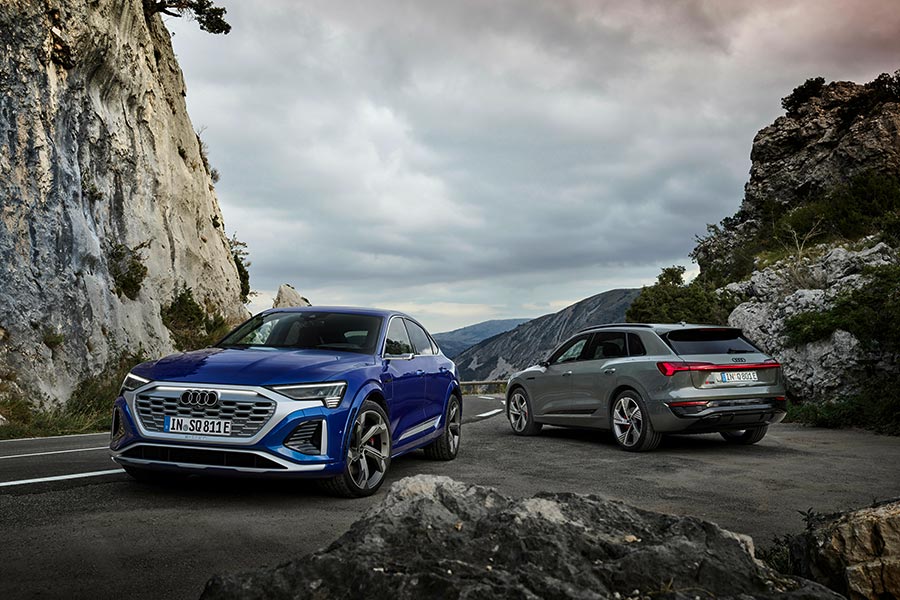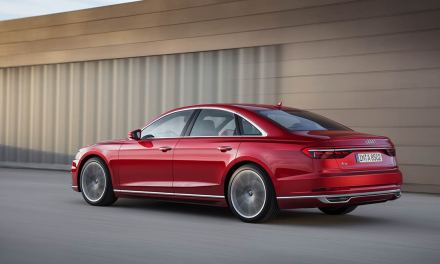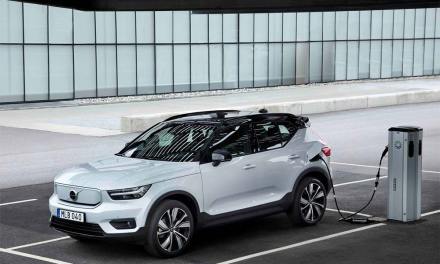In 2018, Audi ushered in a new era of electromobility with the e-tron. The model has since set the benchmark for electric luxury SUVs and will be further developed with the introduction of the Audi Q8 e-tron. This marks a new milestone in the successful history of this electric pioneer.
The electric SUV and crossover offers a top-of-the-line drivetrain, with optimized aerodynamics, improved charging performance, and extended battery capacity and range of up to 361 miles (WLTP) for the SUV and 372 miles (WLTP) for the Sportback version. Stylish modifications to the front of the vehicle give these new flagships a contemporary look.
Since the introduction of the Audi e-tron in 2016 and the sale of 150,000 units, Audi has been diligently following an electric roadmap. The company’s current electric portfolio contains eight models, with plans to expand this to more than 20 by 2026. At this point, all models released by Audi on a global level will be fully electric.
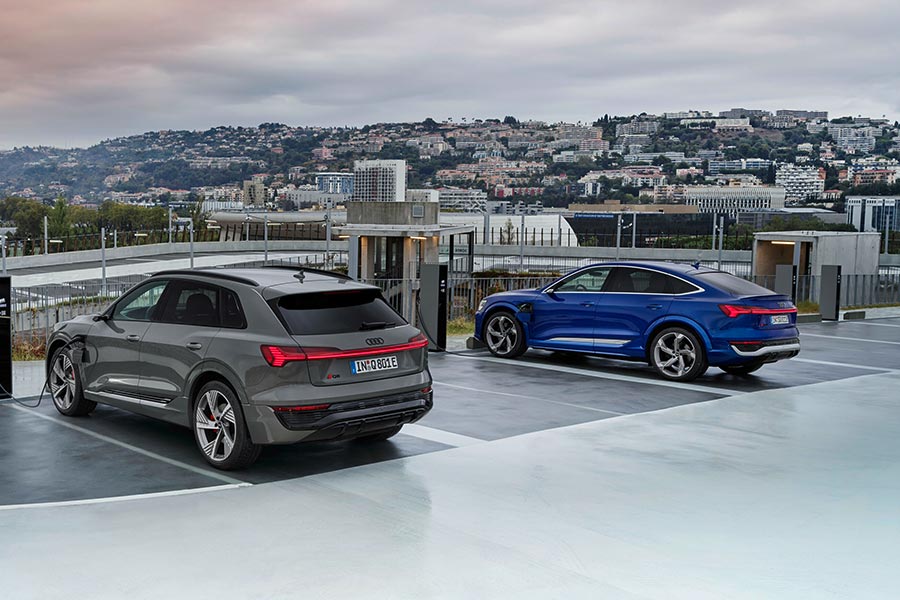
Markus Duesmann, Chairman of the Board of Management of AUDI AG, announced that their corporate strategy Vorsprung 2030 has made a defined commitment to transition to become a fully electric brand within 11 years.
The Audi Q8 e-tron has been upgraded to be more efficient and have a farther range, in addition to its refined design. This model is a crucial part of the electric portfolio, as it has the potential to stir emotion and make electric cars accessible for everyday use.
Audi Board Member for Technical Development, Oliver Hoffmann, commented on the customer benefit of the new refinements made to the Q8 e-tron. Hoffmann noted that “we were able to significantly increase both battery capacity and charging performance, achieving an optimal balance between energy density and charging capacity in order to increase efficiency.” Additionally, he highlighted that there have been improvements made to the motors, progressive steering and chassis control systems in order to refine the dynamic driving characteristics that are characteristic of Audi’s Q8 e-tron.
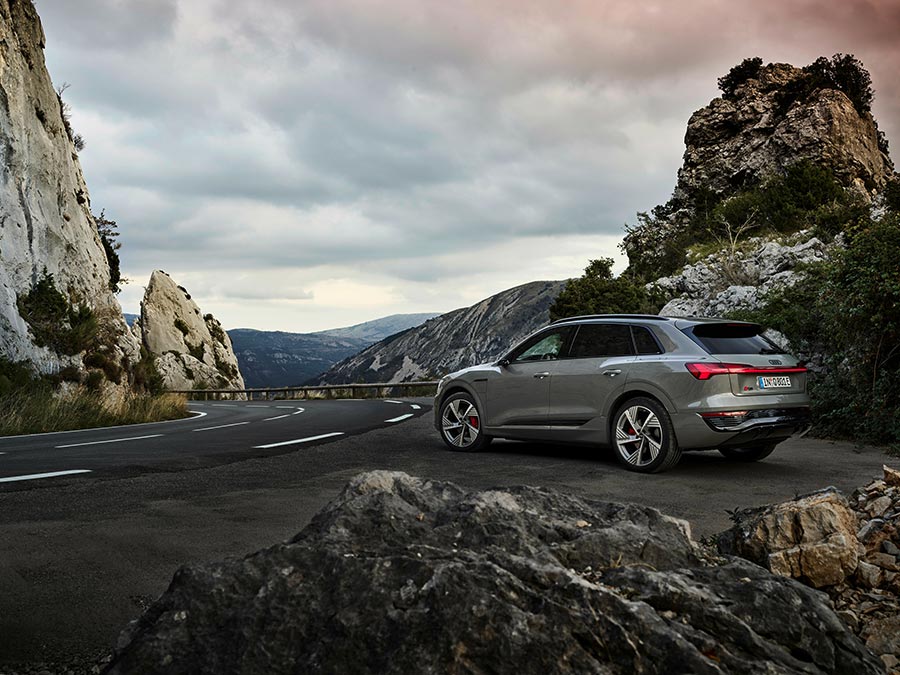
New corporate identity, new face, new name
Audi has demonstrated its commitment to electric SUVs and crossovers by renaming the model the Q8. The Audi Q8 e-tron and Q8 Sportback e-tron are immediately distinguishable by their distinct electric design language, featuring new front and rear designs. The renaming of this flagship model further solidifies Audi’s commitment to electric vehicles.
The Audi Q8 e-tron recently debuted as the premier electric SUV model from the company, featuring a two-dimensional design of the iconic four rings logo on the exterior. Additionally, a unique feature of this model includes lettering with an Audi logo displayed on the B-pillar.

The maximum amount of space and comfort
Measuring 4,915mm in length, 1,937mm in width, and 1,619mm in height for the Sportback and 1,633mm for the SUV, the all-new Audi Q8 e-tron offers maximum interior space and comfort.
The Audi SQ8 e-tron and SQ8 Sportback e-tron boast a lower profile by two millimetres, a width of 39 millimetres, and a wheelbase of 2,928mm offering ample legroom in the back seats. Both vehicles guarantee generous storage capacity with 569 litres in the SUV and 528 litres in the Sportback. Additionally, 62 litres are available in the front storage area, known as the ‘frunk’.
Three drivetrain variants
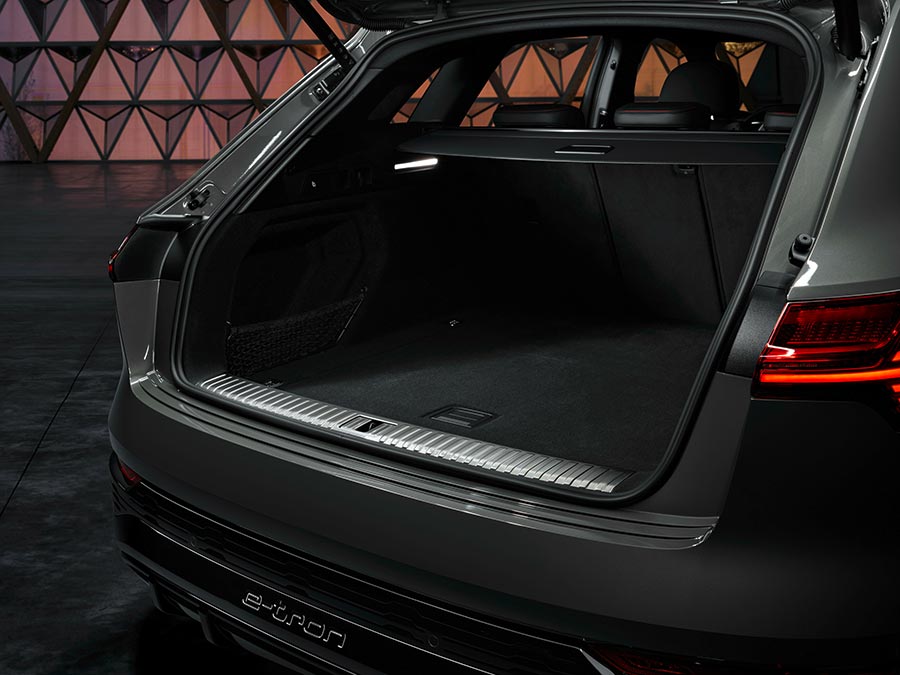
The Audi Q8 50 e-tron and the Audi Q8 50 Sportback e-tron both feature three drivetrain variants with electric all-wheel drive. Powered by two motors, these models boast 250kW (340PS) of power in boost mode and a torque output of 664Nm. When tested under the Worldwide Harmonized Light Vehicle Test Procedure (WLTP), these vehicles achieved a range of up to 305 miles for the SUV model and up to 313 miles for the Sportback variant.
The Audi Q8 55 e-tron and Audi Q8 55 Sportback e-tron are the flagship models in the lineup. These vehicles are powered by two electric motors producing 300kW (408PS) of power, and 664Nm of torque when in boost mode. According to the WLTP test cycle, these models boast an impressive range of up to 361 miles for the SUV, and up to 372 miles for the Sportback. Both vehicles are limited to a top speed of 124mph.
Audi recently released two new top-end models, the Audi SQ8 e-tron and Audi SQ8 Sportback e-tron. Both vehicles are propelled by three motors, producing a combined boost performance of 370 kW (503PS) and 973 Nm of torque. With a range of up to 306 miles for the SUV and up to 318 miles for the Sportback, these models are sure to offer drivers plenty of versatility in their travel. Furthermore, a top speed limit of 130mph provides enough power for drivers looking for an adrenaline rush.
More battery capacity and higher charging performance
The Q8 50 e-tron has a battery storage capacity of 89kWh (95kWh gross), while the Q8 55 e-tron and SQ8 e-tron boast a capacity of 106kWh (114kWh gross). An adjustment to the battery management system has also increased the usable battery capacity for customers.
The Audi Q8 50 e-tron, as well as the Q8 55 e-tron and SQ8 e-tron, can reach its maximum charging performance of 150kW and 170kW respectively at a high-powered charging station. Under ideal conditions, the battery can be charged from 10 to 80 percent in just 31 minutes, equating to a range of up to 260 miles.
The Audi Q8 e-tron is capable of charging up to 11kW at a standard AC charging station or wallbox. An optional AC upgrade of up to 22kW is available from Audi. Depending on the power source, charging times can vary from under ten hours for the 50 e-tron model, with ideal conditions present, to around 12 hours for the 55 e-tron. With a 22 kW power source, the charging time for both models is reduced to approximately five and seven hours respectively.
The Audi Q8 e-tron comes equipped with the Plug & Charge function, allowing for automatic authorization and activation of compatible charging stations. Audi charging, set to launch in 2023, will replace the existing e-tron Charging Service and provide convenient access to around 400,000 public charging points across Europe. In addition, the e-tron route planner aids in locating charging points along drivers’ journeys.

Revised rear-axle motor and electric torque vectoring for better dynamics
The newly released Audi Q8 e-tron features an optimized asynchronous motor on its rear axle, increasing its torque and range capabilities. This was achieved by increasing the number of coils generating the electromagnetic field from 12 to 14, thus creating a stronger magnetic field with similar electricity input. This allows the motor to generate more torque when required, while consuming less energy to produce the same amount of torque when necessary; resulting in reduced consumption and increased range.
Audi has refined a three-motor set-up for the new SQ8 e-tron, comprising of a 124kW (168PS) electric motor on the front axle and two 98kW (133PS) electric motors on the rear axle, driving each wheel. This provides up to 370kW (503PS) of power in boost mode, with torque able to be divided across both rear motors between the wheels virtually instantaneously.
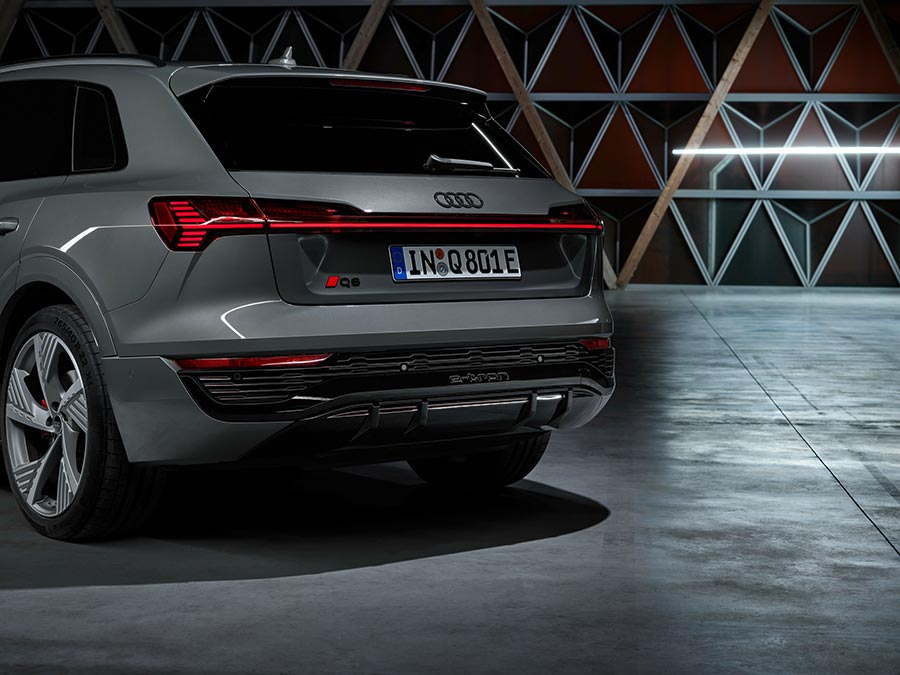
Balancing act between comfort and sportiness
The all-new Audi Q8 e-tron comes with a standard air-spring suspension with controlled shock absorption, offering 76mm of height adjustability to ensure optimal performance in varying driving situations. Additionally, its air-spring tuning has been adapted to optimize lateral dynamics and electronic stability control, making tight cornering more precise than ever.
The Audi Q8 e-tron offers improved agility due to its revised progressive steering system, which features a gear ratio that has been adjusted for quicker response to even the most subtle movements. This enhanced driving experience is further supported by more rigid suspension bearings on the front axle, enabling better direct transmission of steering movement to the wheels and improved feedback from those reactions. All chassis control systems have been fine-tuned, yet remain perfectly balanced and in keeping with Audi’s hallmarked engineering.

Enhanced aerodynamics
Aerodynamics was a priority in the engineering of the Audi Q8 Sportback e-tron and Q8 e-tron, resulting in a reduction of their respective drag coefficients from 0.26 cw to 0.24 cw and 0.28 cw to 0.27 cw. Wheel spoilers mounted on the underbody have been implemented to effectively divert airflow around the wheels for improved performance.
The Audi Q8 Sportback e-tron has seen alterations to its exterior, with larger spoilers now mounted on the front axle and the rear wheels. The SQ8 Sportback e-tron, on the other hand, only boasts spoilers on its rear wheels. Additionally, this is the first Audi model to have a self-sealing system, in addition to electric shutters near the grille, which serves to optimize airflow and prevent unwanted losses.
Remote park assist plus – More convenient parking
The Audi Q8 e-tron offers up to 40 driver assistance systems, including Remote Park Assist Plus (available to order starting in 2023). This system enables the Q8 e-tron to conveniently manoeuvre into even the most narrow parking spaces. Underpinning these capabilities are up to five radar sensors, five cameras and twelve ultrasonic sensors that provide an array of environmental information which is then analyzed by a centralized driver assistance control unit.
Customers can manage the parking process with the myAudi app on their smartphones. When the car reaches its designated spot in the parking space, it automatically turns off, engages the parking brake, and locks the doors. To depart from the space, the Q8 e-tron is activated with the help of the myAudi app, allowing for easy access by shifting slightly out of park.
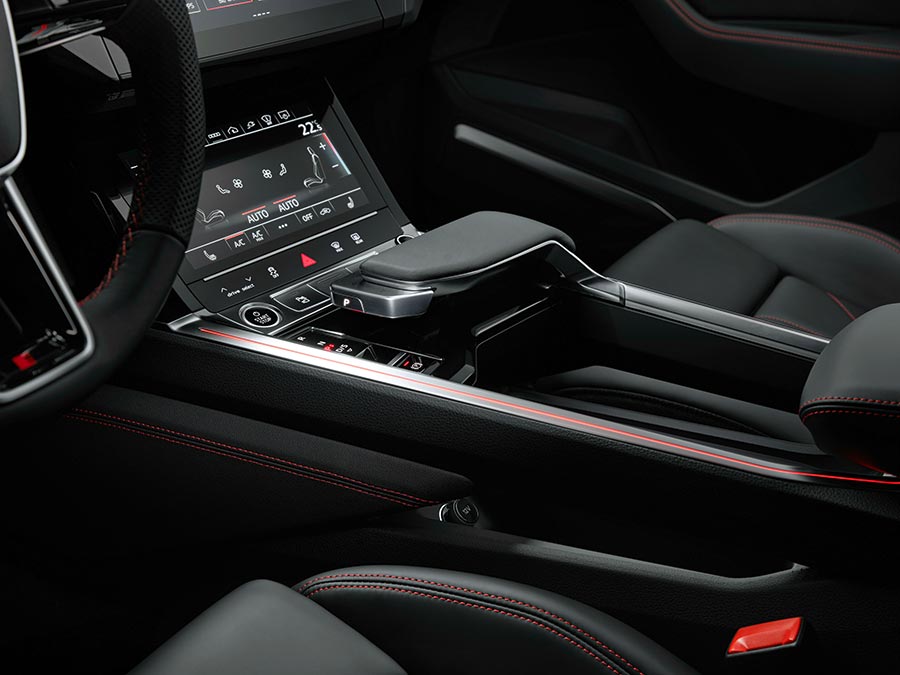
Digital Matrix LED headlights
The Q8 e-tron is equipped with a range of cutting-edge features, including Digital Matrix LED headlights. These headlights aid drivers when on motorways by emitting an orientation light to mark the car’s position in the lane and help keep it central in tight spaces. Additionally, drivers benefit from enhanced traffic information, a lane light with direction indicator, and an orientation light for country roads.
High-res touch displays and voice control
The Audi Q8 e-tron features the MMI touch response operating system, with two large, high-resolution displays, namely a 10.1-inch display on top and an 8.6-inch display at the bottom, thus replacing conventional switches and knobs. Additionally, various features can be activated through natural voice control for added convenience. As with all luxury Audi models, this advanced infotainment system offers a unique driving experience.
The Audi Q8 e-tron is equipped with an innovative digital display and operating concept, as well as a standard Audi virtual cockpit with full HD resolution. A selection of intricate graphics provides users with comprehensive information regarding electric driving, including charging performance and range.
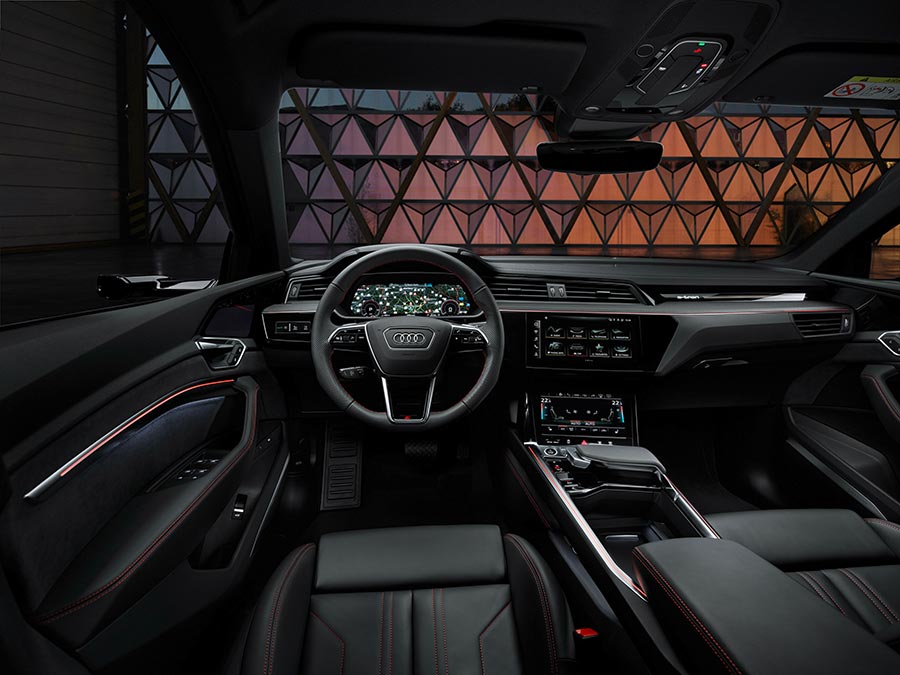
Better use of recycled materials
Audi has announced their Q8 e-tron electric vehicle will be certified as net-carbon-neutral1 for customers in Europe and the USA. To further this commitment to sustainability, the car utilizes recycled materials for certain components, which are processed through a recycling process. This reduces the number of resources utilized and creates a closed, efficient, and sustainable material loop.
The interior of the Audi Q8 e-tron integrates recycled materials for insulation, damping, and carpeting. The Tech Layer, an ornamental inlay above the display, is available in a new anthracite-coloured technical material composed of recycled PET bottles. The sports seats in certain specifications are upholstered with synthetic leather and Dinamica microfiber. Dinamica comprises up to 45 percent polyester fibres produced from recycled PET bottles, used textiles, and fibre residue.
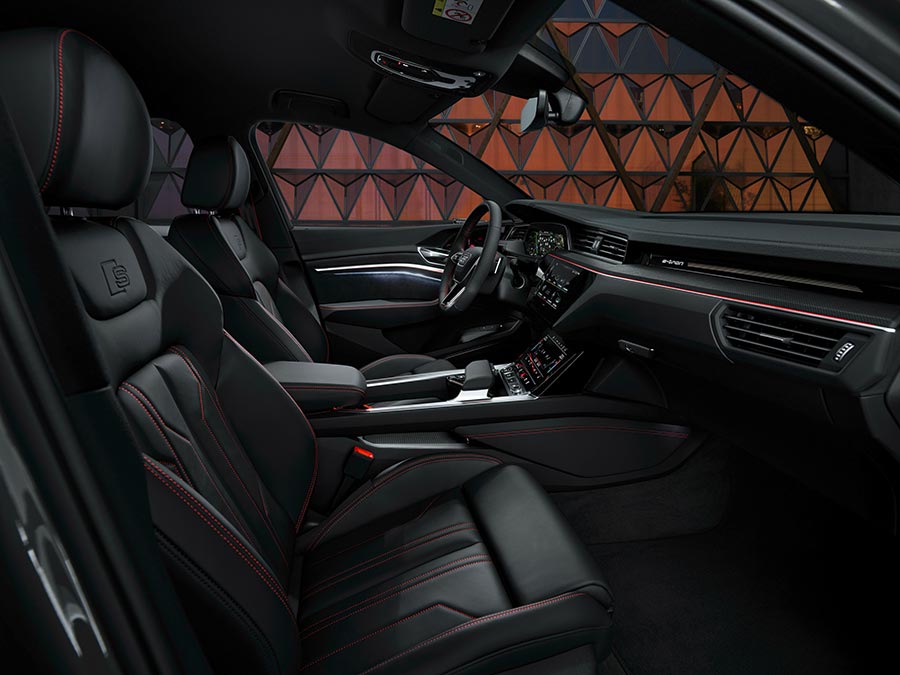
Dinamica’s production process is solvent-free, which marks a significant improvement in microfiber quality and contributes to environmental protection.
As part of the PlasticLoop project, Audi and LyondellBasell have collaborated to use chemical recycling for the first time to repurpose mixed automotive plastic waste in series production of the Audi Q8 e-tron. Notably, some safety-related components of this process, such as plastic covers for seatbelt buckles, are being used in a production model for the first time.
LyondellBasell and Audi have joined forces to implement a unique process. This process involves taking plastic components from customer vehicles that are beyond repair, dismantling them and removing foreign materials such as metal clips before shredding them. These components are then chemically recycled into pyrolysis oil which is used as a raw material for the mass-balance production of new plastics.

